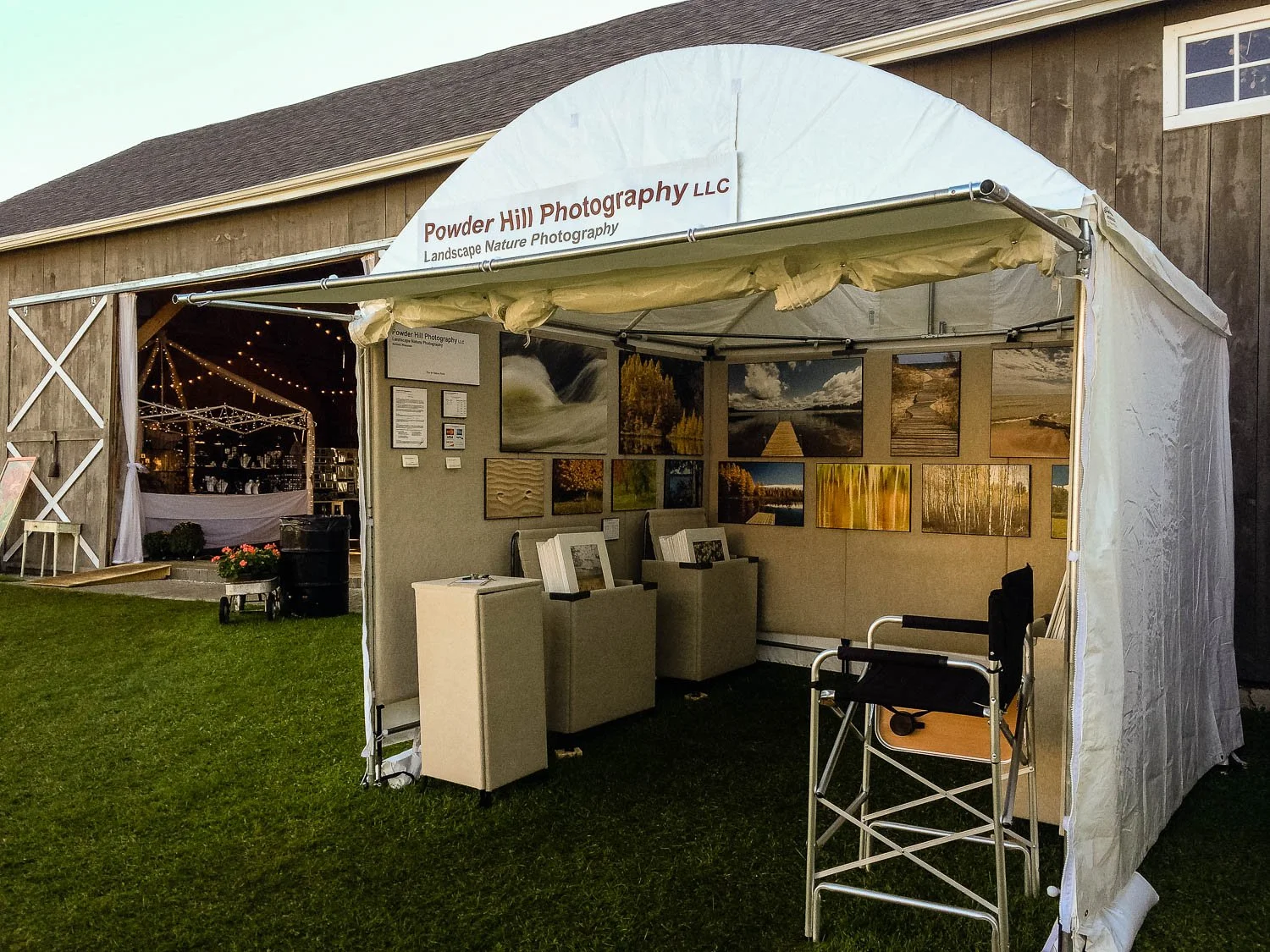Booth Chair Placement
Designing Your Booth
When “designing” one’s art fair booth, many questions arise.
What type of tent is needed?
How should the prints be displayed?
Will prints bins or tables be used?
Should credit cards be accepted?
How should all of this be transported?
One important decision that is often over-looked is the location of the chair (or where to stand) in the booth.
Why Have A Chair
Art fairs are day-long events, on different types of surfaces. Standing all day gets tiring.
A chair comes in very handy to provide that brief respite. The chair may also represent where the check-out occurs.
Possible Locations
There are many possible locations for your chair.
Ask any number of artists and you’ll get a mix of answers.
Some locate their chair (and thus themselves when not standing), in the very back, just outside the booth itself. Dependent upon how much space is allocated behind the booth, this location isn’t always available.
You may notice some artists have their chair in the back corner of the booth, sometimes “hidden” by a partitioned wall.
Other artists place their chair much closer to the front.
Still others, if room is available, prefer to be located completely outside and slightly away from their booth. You may observe this where there is a great deal of open space between booths.
My Favorite Location - Front Right Booth Corner
Personally, I place my chair in the front right corner as often as I can.
This location allows me to greet people immediately. I like to say “hello” to everyone, both those who enter the booth and those who casually walk by.
For me, I’m at the art fair to sell my prints. If I’m standing (or sitting) outside, or in the very back of my booth, I’ve lost the immediate opportunity to casually interact with the print-viewing potential customer.
At times, a wall-mounted print will catch the eye of the casual passer-by. I always offer the idea of stepping into the booth to see the prints close-up. They may be hesitant with children or with their dog. I let them know my booth is both kid-friendly and dog-friendly.
When the viewer is drawn in by a specific print, I’ll ask which it might be. With just slight encouragement, most viewers step in for much closer evaluation — and become potential customers. They may also sign up for my free newsletter.
Being In Front - Does That Create An Invisible Barrier?
Perhaps it would, if I didn’t engage the visitors with a casual hello or comment. People want to know the artist and feel a connection with them before they make a purchase.
Personally, from my own experience visiting art fairs, I can never make a connection with an artist who is sitting in the back (or outside) of their tent. I’ve always felt as though I was bothering them.
On the other hand, greeting the artist as I walk into their booth starts this connection immediately. It seems to me, this is true for most people visiting art fairs.
Does The Type of Chair Matter?
Have you ever walked up to an artist sitting in a regular sized lawn chair and started asking a few questions about their artwork? How comfortable did you feel looking down at the artist, assuming they didn’t stand to talk with you?
Or as an artist, have you utilized the typical lawn chair during the day, yet stood for each customer who asked a question or started a conversation? How many times did you find yourself trying to quickly pull yourself to eye-level?
To forego this situation, I use a very sturdy, lightweight, aluminum-framed canvas director’s chair. (Specific model: Earth Heavy Duty VIP Tall Aluminum Director’s Chair, from Amazon) The base is slightly wider than most, a real benefit on uneven ground. When the show is over, it easily folds for transportation.
I use the taller director’s chair, placing me at eye-level with any visitor. Talking to visitors is convenient from an eye-level, seated position. I can easily come off the chair, and still retain eye-level contact.
Whatever Works Best For You
In the end, the location and the type of chair will be what works best for you. Its location will be where you are most comfortable.
